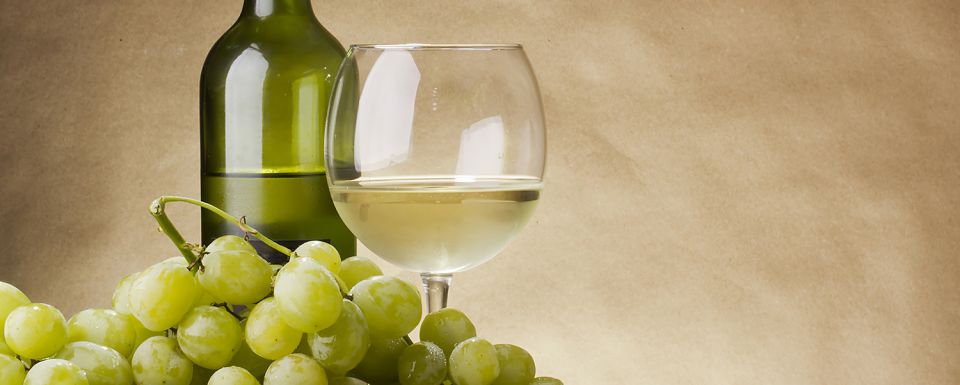Great wines start with great grapes. So, it’s important to select high-quality fruit. Here’s what to look for in a Sauvignon Blanc grape profile.
Cool climate appellations will yield wines with citrusy aromatics, forceful fruit, and herb influences. While warm climate appellations will result in wines with pronounced floral aromatics, which lend tropical fruit and melon elements to your wines.
Whichever wine region you select, the Brix profile (amount of sugar) of your fruit should range from 22 to 25. Avoid overripe high brix fruit.
The acid profile is a bit higher for Sauvignon Blanc than most vinifera wines. A concentration of .7 grams T/A per liter is the minimum desired, with an acceptable range as high as .85 to .9 grams per liter. This range will make for a clean, crisp presentation with brisk acidity.
You want to obtain a pH value of 3.5 or below. At this strength, stability in color and clarity are improved — a vital characteristic for a proper presentation.
Making the Wine
If I say it once, I’ll say it a million times — clean everything while making your wine.
Prefermentation
Start by crushing and destemming the grapes. If you don’t remove the stems, you’ll get a vegetable influence which doesn’t fit the profile of the varietal. It’s fruit aromas we are after here.
Sulfite this juice immediately by adding 50 ppm potassium metabisulfite or a quarter teaspoon per 5 gallons of juice. This kills native yeasts, inhibits the malolactic conversion and helps protect the juice from oxidation.
Make sure to allow 24 to 48 hours for the juice to settle and clear before starting the fermentation.
This is best done in a closed, topped up container that minimizes air contact. If your container isn’t full, top with an inert gas. Nitrogen or Argon work well, as does CO2. (Note: you can find these gases via your local welding supply dealer).
Keep the juice cool. A good temperature is 60 degrees. If you can, maintain an even cooler temperature – as low as 53 degrees. Cool temperatures help retain the aromatics which make this variety famous.
Yeast Selection
This is a factor often overlooked by the home winemaker. Yeast varieties influence key aspects of your winemaking. They affect the sensory profiles, speed of fermentation, mouth feel, and varietal characteristics that develop in your finished wine.
For Sauvignon Blanc, I recommend any of the following yeasts.
- QA23: Working temperature from 59 to 90 degrees. Fast fermentation speed. Kills natural yeast. Alcohol tolerance to 16%. Low nitrogen requirements. Enhances varietal character.
- K1 V1116: Working temperature from 50 to 95 degrees. Fast fermentation speed. Kills natural yeasts. Alcohol tolerance to 18%. Low Nitrogen requirements.
- Alchemy 2: Aromatic with fast fermentation kinetics. Working temperatures from 56 to 65 degrees. This strain helps to enhance citrus aromas and is wonderful for cool climate grapes. Alcohol tolerance 15.5%.
Fermentation
Ferment in glass or stainless, although primary fermentations in food-grade plastics is acceptable. It’s important to use a closed top vessel to protect your juice from oxidation. Ferment to complete dryness with no residual sugar.
Keep in mind that you want to avoid malolactic fermentation in Sauvignon Blanc. Be sure to add an additional 25 ppm potassium metabisulfite to your wine at this point to ensure that no conversion takes place. That’s 1/8 teaspoon per 5 gallons.
Clarifying
For the wine to be absolutely bright, Bentonite is the choice for clarifying. Filtering with a 2 micron filter works well, as does cold stabilization. Gravity works too, but the air exposure by extra rackings may discolor your wine.
Blending
Here are some blending suggestions for you to experiment with when crafting your own style of Sauvignon Blanc.
- Semillon: rounds out the mid palate and tames some of the acid; try a 5 or 10% blend.
- Reisling: adds a little richness to the texture and overall finish; try 5% blend.
- Viognier: adds a spice influence to your finished product.
- Muscat: acts as a great aromatic influence.
Aging
One of my favorite characteristics of Sauvignon Blanc is that it's the first wine out of the cellar!
Three to six months is plenty for bulk aging, followed by two to three months in the bottle. It will be ready just in time for the warm spring weather.






